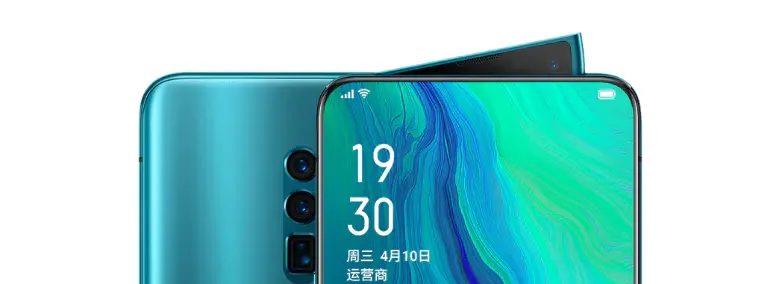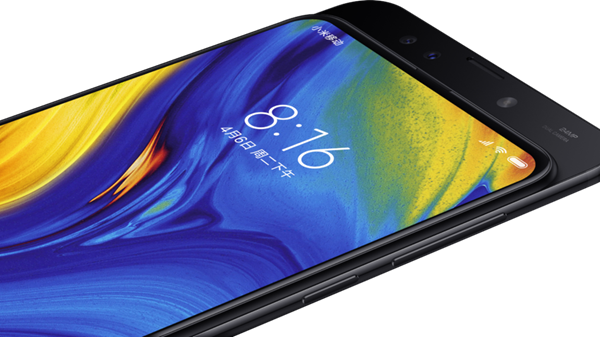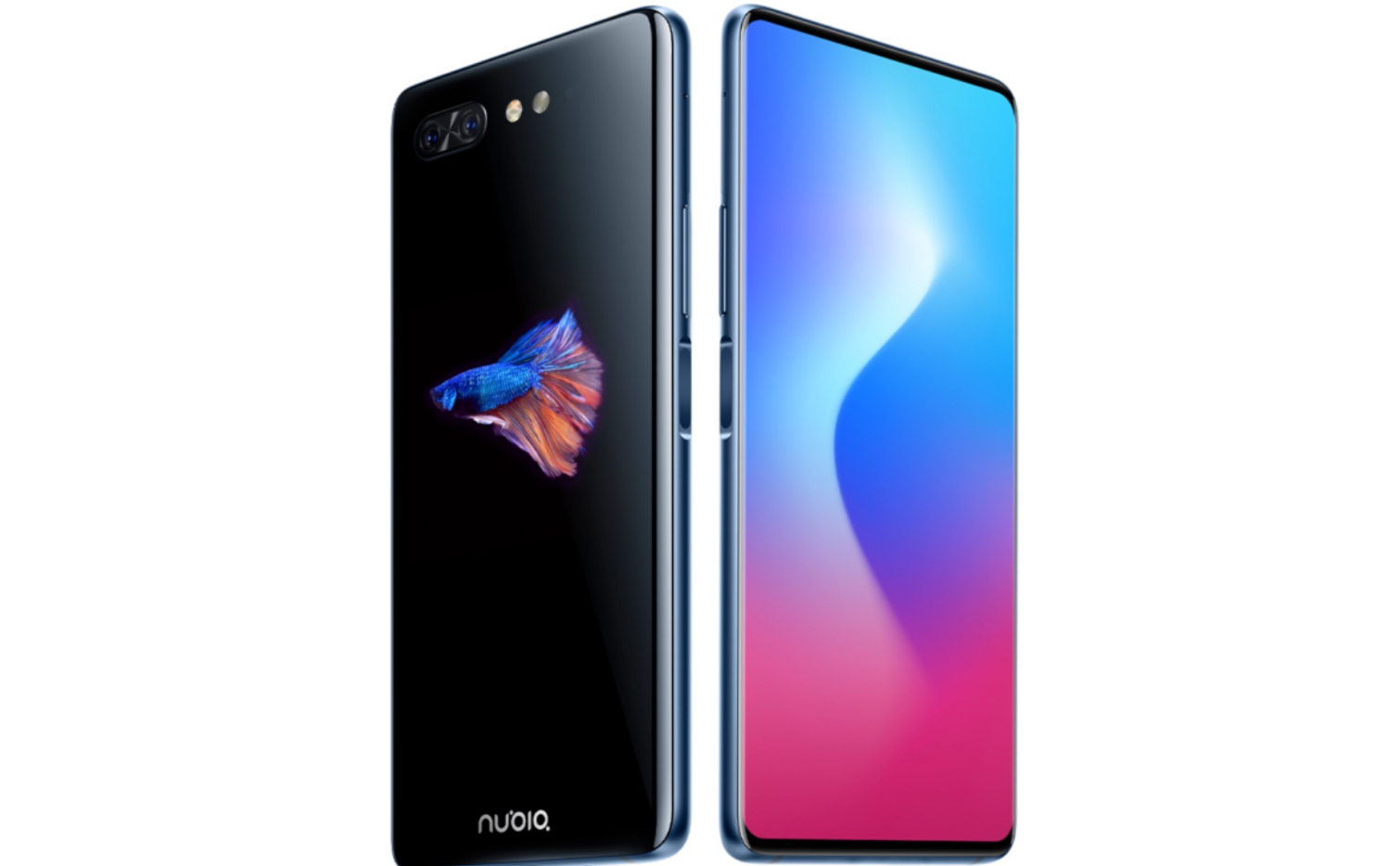
How to kill the notch?
Oh, hi! I don’t know if you realize, that you’ve landed on a programming blog! But wait! Don’t go away yet! I just wanted to give you a small note, that this tech-category article you’re going to read is something very new here. So, I’d love to hear your opinion in the comments below, if you want to see more of such articles. Tech is very much connected with programming and it’s something that I’m really interested in too! Anyway, without further ado, let’s explore all the ways to kill the notch!
Humble beginnings
Ah… Apple - company hated, loved and copied by many, like no other. They may not be the first to do something (notch included), but when they finally do, it usually shakes the market. You know what I’m talking about, don’t you? Yeah, the iPhone X - a phone that since its release back in September 2017 lead the way for almost all 2018 smartphones, deeming it the year of notches! But, even though the notch allowed the screen-to-body ratio to grow and interesting camera features to appear, a lot of people really hate it. Like really! And that’s for a good reason actually. Everyone impatiently awaits the 100% screen-only phone, often even resisting to use “notched” phone. This puts significant pressure on manufacturers and thus, speeds up the development in this area.
Sadly, such development takes time and advances in steps. That’s why now we have a lot of notch “alternatives”. And, because there’s quite a few of them, in this post, we’re going to explore the pros and cons of each solution!
Notch

Let’s start by revisiting the original notch. It’s big, it’s black, it’s… innovative?! Yes, I actually consider the notch to be quite progressive. When you think of it, it’s this notch that started it all - bezel-less revolution. And - in the course of 2018 - it evolved rapidly!
iPhone X definitely wasn’t the first notched phone, but it popularized the idea. Apple finally changed the design of its flagship phones, to something that looks more appropriate for today’s standards. With the new design, they were able to make some impressive use of the available space. The notch didn’t only include a front-facing camera, but also the whole array of sensors, used for Face ID.
After iPhone X was presented, other companies followed the way. The notches were appearing from left and right. Sadly, a lot of them didn’t utilize the “notched space” to the same extent as Apple did. They just put it right there (with shrunk bezels, of course), taking display space they shouldn’t have and irritating their users.
As for the notch as a way of solving front-facing camera problem - it’s debatable. You must remember that a notch can take various forms. While thinking about it, I mean something more like the iPhone X/Xs/Xr, rather than Google Pixel 3 XL. But, whatever the form might be, any notch permanently occupies its placement space. And, as the mentioned space was usually used for notifications and indicators anyway, I don’t think it’s that bad. That is unless we’re talking about watching movies. Indicators that were previously placed right where the notch is now can be limited or hidden, and the fact that the notch is right in the middle, makes it feel a bit more natural and intuitive.
Teardrop

Now, a teardrop is technically just a much smaller notch. But, because it has some special attributes of its own, I thought it’s reasonable to put it in a separate category.
As it turns out, you don’t need an entire rectangle to contain just one front-facing camera. Weird, right? And teardrop-style notch allows you to do just that. You still have a notch - this “intrusion” at the top of the screen - but it’s much smaller and definitely less noticeable. This also means more space for top bar indicators and, still - some drawbacks while using the phone in the full-screen mode.
Teardrops also can’t pack anything more than a single camera. No fancy sensors, no second camera - limits are definitely present. But, from the bright side, as I don’t really need these features, I’d be very happy to pay the cost, for getting a bigger, more immersive display. This makes me wonder - why not just make a front-camera-less, full-screen phone? As I’m not a selfie person, if something like this existed I’d really consider buying it…
Bezels

If you’re a full-blown notch hater, here’s an advice - why don’t you get yourself a usual, “bezel-full” phone? Who could even think that these huge bars at top and bottom of the device were considered fine only 2 years ago? That’s the best progress indicator - demands changing and expectations growing as time goes on.
Seriously though, even last year flagship Samsung Galaxy phones had bezels. Only smaller. It didn’t look that bad, right? It may not be as bezel-less as you’d want it to be, but there were a lot of advantages to it too! Your screen was simple and regular, and the remaining bezels could house some awesome stuff like sensors or stereo front-facing speakers!
Of course, small bezels weren’t the only reason that the Galaxy S9 looked so gorgeous. The overall design and lack of any side bezels definitely had its impact on the overall look and feel of the device. Anyway, whether it’s this phone or some other one - it proves that bezels are still among us!
Chin

You know what’s similar about all those “bezel-less” phones? They have chins! That’s right - while everyone is trying to remove intrusions from the top, not many think about the stuff on the bottom!
If you take a look at any smartphone for that matter, you’ll realize that no matter how bezel-less it is, it has a slightly bigger chin. Almost everyone means with the exception of the iPhone X/Xs/Xr. Look at it, and you’ll immediately notice that all of its rounded bezels are equal in size (not counting the actual notch). For me, this makes the phone look much more appealing. Sadly, such a design is not present among Android phones. You see, in every smartphone, the screen needs to be connected to the internals by a special ribbon cable. And it’s this connection that requires some extra space. Apple took its time and bend the screen underneath itself so that the bottom bezel remains small. But, as far as I know, it’s a very complex and expensive process, so that other manufacturers can’t do it right away.
But, as you can see on the picture above, some companies - like Xiaomi - try to embrace the chin instead. They make no bezel at the top of the phone, in favor of a bigger one at the bottom. Oh, and they place the camera there! That’s 3 bezels down and only one to go!
Unsurprisingly, using such a camera in its default position is quite frustrating. So much so, that you’ll most likely end up rotating the phone. Also, even if there’s no notch of any kind, I consider having a single, asymmetrical bezel really intrusive. To be honest, I’d take an old-school top and bottom bezels (especially ones like Galaxy S9 has) over something like this.
Cut-out

One of the most recent additions to the notch alternatives family is the cut-out display. The idea was popularized by the Galaxy S10 - just make a hole in the display to fit the camera. Does this make the notch obsolete though?
As camera cut-outs have appeared only recently, it’s safe to assume that it wasn’t so easy to develop and manufacture up-front. So-called “punch holes” moved the intrusion point from the center to the side of the screen. That’s where the pros and cons come in.
When you get used to the positioning of the hole, it’s definitely less intrusive than a full-blown notch. You can also embrace and have some fun with it! There’s a ton of special wallpapers and even indicator-like apps that make some creative use of the hole. But, the disadvantage of having the intrusion at one side makes all your indicators and stuff move a little bit to the other side. It can feel a bit weird at first.
Still, I think cut-outs look good given their current positioning. Even though Galaxy Note 10 is rumored to have a cut-out at the center (more like a notch-hole), I don’t think it’d look any more appealing.
Pop-up

With pop-ups, we’re getting into more “creative” territory. Why have your camera always visible, if you can hide it inside the phone? Pop-up phones embrace this idea, together with some additional mechanical parts and interesting designs!
Why you might not like a pop-up camera? It’s hidden, so you only make it pop up when it’s needed and it’s usually rated for a couple of hundreds of thousands of opens/closes (cycles), so, unless you’re an addicted selfie-taker, such kind of a phone should serve you well, right? Well, the only things that concern most people about pop-ups are their mechanical parts. They may last through a lot of cycles, but there’s no guarantee that debris or dust won’t get in there and make the device work improperly.
Aside from that, pop-ups don’t seem to have any more cons. Some might say that they’re generally a bit more fragile, but modern smartphones have special fall-detection feature, so the camera will be automatically hidden when you drop the phone (if that’s part of your concerns). Pop-ups make the top of your screen clean and truly bezel-less, so that (given that there’s no chin), you can enjoy some real, full-screen experiences.
Slider

If you’re not into mechanical parts and all that stuff, you might like a slider mechanism. That’s right - in order to find better alternatives for notches, we’re actually using inventions as old as sliders! Like really, these were quite popular back in the era of feature phones!
Now, to be clear, there are phones that allow you to slide them by hand, or automatically. In the second scenario, it feels somewhat like a much bigger pop-up. But, both cases require some special treatment. Your sliding phone is built from 2 parts - the top (display, internals, front-facing camera(s) and etc.) and the bottom (sliding part, rear cameras, and possibly wireless charging coil). This can result in a not only thicker and heavier phone but also the danger of debris getting in-between the two parts, effectively blocking the slider.
So, here, again, we see similar disadvantages as the pop-ups have. Yet, you get a bit more space for the cameras, making this approach slightly more diverse.
Dual screen

I don’t know if you’ve noticed, but many of these interesting notch-problem solutions are coming from Chinese companies. Credit needs to be given, where it’s due - they’re really creative! But phones like ZTE Nubia X take it to whole another level! Say hello to dual-screen phone!
The idea is simple - just put a second display on the back, so that the user will be able to take selfies by using it and the usual rear-facing, high-quality camera. Now that’s pretty interesting! Many phones are made from glass anyway, so there’s no protection loss or anything like that. The screen is OLED, so when its turned off it almost unnoticeable. And the phone is overall perfectly solid, with no debris getting in! Great!
There are some disadvantages to having the second screen, but in contrast to all kind of cons we’ve already talked about, these are less… physical. Sure, your phone will be thicker because of the second display, but that’s all! Of course, using the second screen can feel a bit awkward at a time. And so does rotating your phone every time you want to take a selfie. It definitely takes some getting used to. Also, the second screen may leave some wanting more of it… from both sides! It’s weird, isn’t it?
Flip

Asus ZenFone 6 features the most recent alternative to the notch. It builds on the idea of dual-screen smartphones of “reusing” the rear camera. When you need to take a selfie, the camera just rotates from the back to you, revealing itself up-front. Besides all that, the rotation handle brings some interesting features to the table - especially when it’s allowed to be rotated at any degree you want!
Here, the same rules apply as with pop-ups and sliders. Debris getting in and the number of cycles made matter. Also, when “opened”, the camera is a little bit higher than usual. Worth noting, if it makes a difference…
Solution
As you can see, companies are getting their heads around killing the notch. Some ideas are interesting, some better, some worse, and some doesn’t make much sense at all! I’ve included all the variations that I know about on this list. Still, I don’t know if I didn’t miss some of them…
Anyway, I think it doesn’t matter now, as our struggle is coming to an end! Behold! - The under-display camera!
That’s right! If you’ve followed the latest tech news, you may know that only a few weeks before this post was published, Xiaomi showcased its latest achievement. From what I know, Oppo followed soon.
If you look close enough, you can see that the camera is still there, but under the display! Xiaomi “simply” allowed the light to pass through the turned-off part of an OLED screen, and, thus, allowing the camera to operate from underneath it. That’s some truly impressive engineering right here, and something that we’ll probably see available on the consumer market much sooner than we could have thought…
Opinions?
So, here you have it! A long way that humanity has gone through, to kill the very thing it created. To be honest, writing and researching this post was really interesting! Something refreshing for the blog! Again, I’d really want to hear your opinions, and if you’d like to see more tech-related content. If not with a comment, then by leaving a reaction below. Also, you can consider following me on Twitter, on my Facebook page or through my weekly newsletter. Of course, I don’t insist as I know that not everyone reading this is interested in programming… but maybe? Maybe you’re into that? Anyway, that’s it for now, and I hope you’re having a great day!
If you need
Custom Web App
I can help you get your next project, from idea to reality.